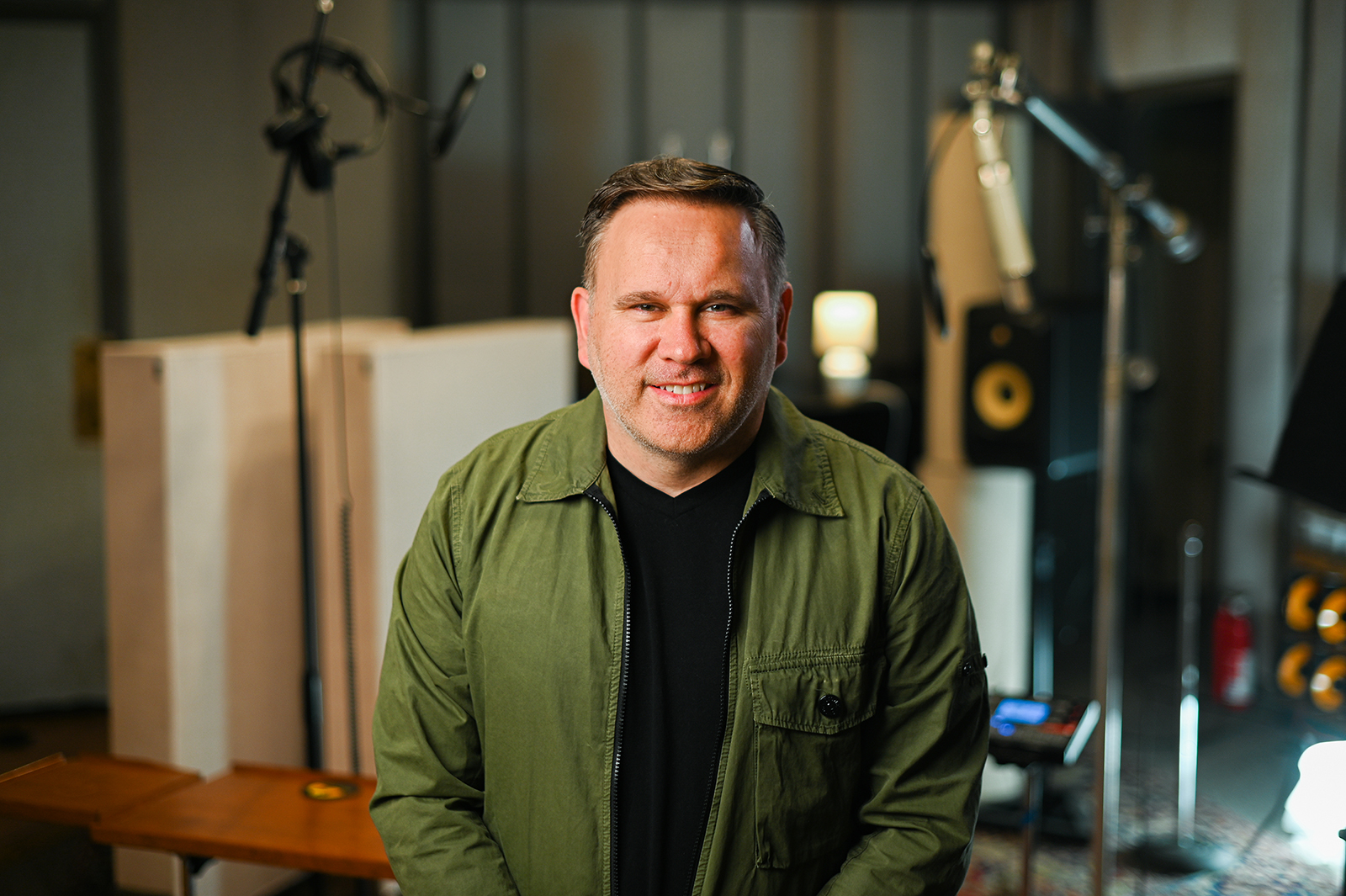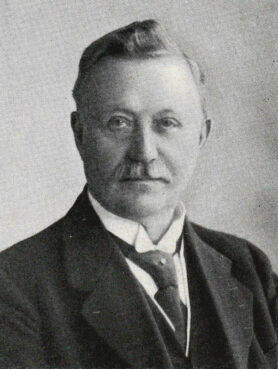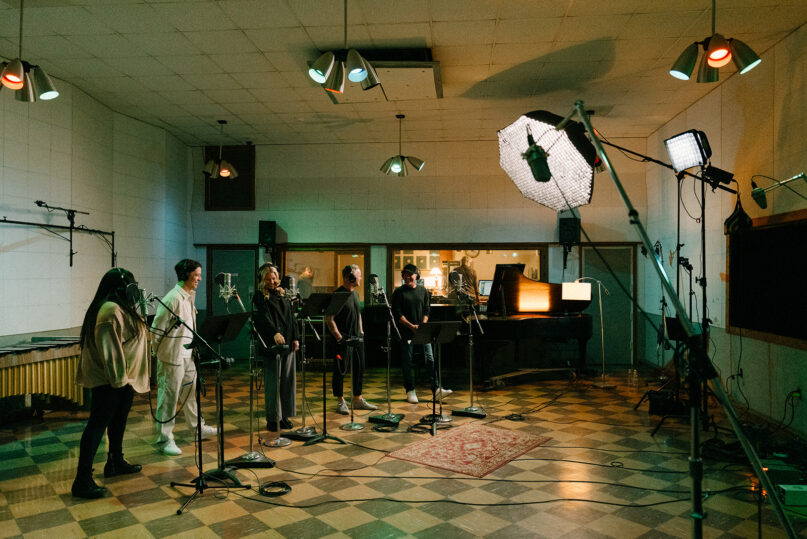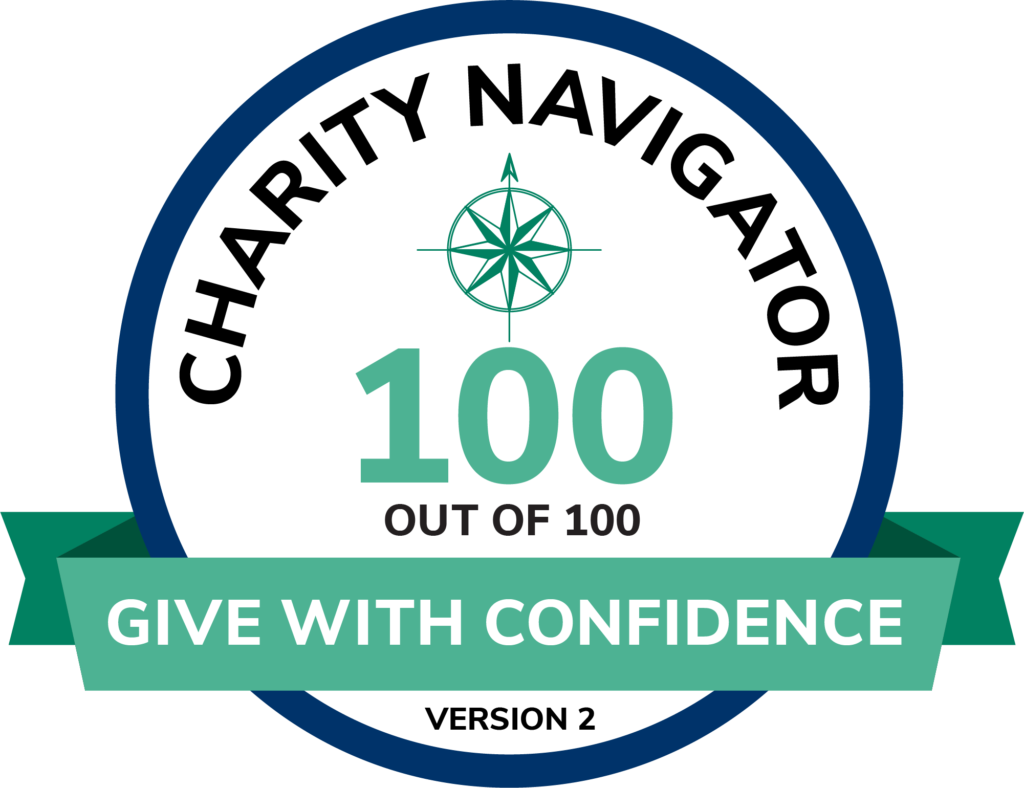(RNS) — The well-known and beloved-by-many words of “How Great Thou Art” have had a long and varied trajectory from Swedish poem to German hymn to a tradition at Billy Graham crusades.
In celebration of the 75th anniversary of the hymn’s popular English translation, Grammy-winning Christian singer-songwriter Matt Redman has teamed up with 15 other artists and released a new version, continuing the hymn’s transatlantic trek that has led it to be featured in countless hymnals and recorded on hundreds of albums.
“Someone wrote something out of the depths of their heart toward God and then it got wings,” Redman said in a late February interview. “It’s just phenomenal to think — isn’t it? — that Elvis recorded this and he gave it some extra wings. And then Carrie Underwood’s version is another version a lot of people talk about.”
Redman first sang and played the hymn as a teenage guitar player in an Anglican church in the English village of Chorleywood because, he said, its chord structure was easier to manage than other hymns. Now, he has added to the complex history of the hymn after being approached by the British charity that owns the copyright for it, the Stuart Hine Trust.
Hine was a British missionary who published the English words in his gospel magazine in 1949. He was inspired by a Russian hymn — which was based on an original Swedish poem — when he was traveling hundreds of miles via bicycle to distribute Bibles and preach through the Carpathian Mountains that traverse Eastern Europe.

Singer-songwriter Matt Redman. (Photo courtesy Merge PR)
Redman worked with Australian native Mitch Wong on the commission of “How Great Thou Art (Until That Day),” which features a new verse, a different beat and a chance to provide humanitarian aid to Ukrainians and other Eastern Europeans in the midst of war.
RELATED: Big churches sound alike. Little churches are the ‘Wild West’ of music, study finds.
“We decided we’re going to have the word ‘war’ in this hymn,” said Redman, who noted that he thinks worship songs should not be considered “escapist” means to momentarily leave behind the problems of the world.
“Now, that’s not a normal kind of hymn word. It’s not something people often would think of singing on a Sunday morning, but it felt like an important word.”
The new stanza of the hymn reads: “Until that day/When heaven bids us welcome/
And as we walk this broken warring world,/Your kingdom come,/ Deliver us from evil,/And we’ll proclaim our God how great You are!/With hope we’ll sing our God how great You are!”
The hymn has been played over 2.5 million times on digital streaming platforms in the month since its release on Jan. 26 by Capitol CMG Publishing and Integrity Music. Phil Loose, one of the trustees, said it is too soon to know how much money the recording has raised.
The Stuart Hine Trust, which has supported Christian outreach and Bible translation, intends to use the proceeds from the writing, production and royalties of the recording to provide humanitarian aid and support rebuilding efforts in Eastern Europe.

Carl Boberg. (Photo courtesy Wikipedia/Creative Commons)
Over its lifetime the hymn has faced moments of relative obscurity and waves of popularity. It dates to 1885 or 1886 when Swedish editor Carl Boberg got caught in a thunderstorm and wrote the first version, then titled “O Store Gud” (or “O Mighty God”), after marveling at the calm that followed it. It was published in a newspaper, then set to music in his country. Though some of its history is hazy, music professor C. Michael Hawn wrote that an English translation made it into some hymnals but “never caught on.”
In the early 1900s, the words were translated into German and then Russian, which Hine heard sung while in the Eastern European mountains. He paraphrased the first two verses in English and was inspired to write the third and fourth verses of “How Great Thou Art” over a 14-year period, according to his trust’s website.
The website quotes him as writing that “the thoughts of the first three verses of How Great Thou Art! were born, line by line, amid my unforgettable experiences in those mountains.” The fourth, which begins with the words “When Christ shall come with shout of acclamation,” was written in 1948 to assuage the grief of Eastern Europeans after the end of World War II.
In the 1950s, the hymn began to have what Redman called a “wildfire moment” when singer George Beverly Shea started using it at the “crusades” of evangelist Billy Graham — including one at New York’s Madison Square Garden that was broadcast on television and lasted 16 consecutive weeks.
Shea wrote in his 2004 book, “How Sweet the Sound: Amazing Stories and Grace-filled Reflections on Beloved Hymns and Gospel Songs,” about how he changed the lyrics “consider all the works thy hands have made” to “consider all the worlds thy hands have made” and modified “I hear the mighty thunder” to “I hear the rolling thunder.”
“I got a bang when I used to hear Elvis Presley sing my two words,” he said in a Religion News Service interview about the rock-and-roll singer, who won his first Grammy for his 1967 rendition of the hymn and earned another for his 1974 live version of it.

Brian Hehn. (Photo by Serkan Zanagar)
Brian Hehn, director of The Hymn Society’s Center for Congregational Song, said the hymn lends itself to both congregational singing and solo and duet voices, as in Redman’s and Wong’s new version.
“I think it does point to the general singability of the song,” he said. “And that’s one of the reasons why it’s very popular, right? Because congregations can sing it. It feels good to sing.”
The hymn, which was popular in the society’s March Madness-type tournament in 2019, is sung both in churches that use contemporary Christian music and is featured in hymnals used in mainline Protestant, African American and Catholic churches.
Hehn notes that the new version leaves out the second verse often found in hymnals and that the new verse moves more quickly to the hymn’s focus on a belief in the atonement of Jesus.
“The new stanza also acknowledges the tension between living in the ‘in between’ time where Christ’s victory over death has been completed and yet there is still death and sin because that final day when all tears are wiped away has not yet arrived,” Hehn added via email.
“With the nod towards that ‘in between’ time and the addition of the word ‘hope,’ they’ve transformed what was originally a song of praise appropriate for any season into what I read as an Advent hymn!” he wrote.
The latest version featured coast-to-coast logistics, with some of the contemporary Christian and country artists recording their parts in California and others in Tennessee at Nashville’s RCA Studio B, where Presley once recorded it.

The single cover of “How Great Thou Art (Until That Day)”. (Courtesy image)
Worship leader Chris Tomlin and country band Lady A’s Hillary Scott sing the first verse of the hymn, while Redman and producer Matt Maher sing the new last verse. Other sections include vocalists Naomi Raine of Maverick City Music, TAYA and Blessing Offor.
Jon Reddick, a worship pastor at Church of the City in the Nashville suburb of Franklin, was part of the recording session in California. He said he enjoyed both the “synergy” of the artists coming together and the chance to sing a song they knew but were also getting to learn in a new way with the additional verse.
“You’re in the room with people you even know and love and admire, or just getting to meet and still admire,” said Reddick, who expects to lead the new version in his congregation when he concludes his time on TobyMac’s Hits Deep Tour.
“It was creative. It was fun. It was spirit-filled. It was a moment.”
Redman said producers were challenged to figure out which voices to use for which parts of the hymn, as they asked each singer to perform more lines than the ones in which they are heard on the recording. Though the compiling of the recordings was like a “jigsaw puzzle,” he said, getting people into the studios was easier.
“When we approached all the people to be part of it, we had a lot of green lights very quickly,” he said, noting they came together for the music and the Ukraine-related mission. “You could tell how dearly they loved the hymn.”
This story has been updated.
RELATED: ‘Greatest hymn’? Sacred song enthusiasts vote in ‘madness’ tournament





